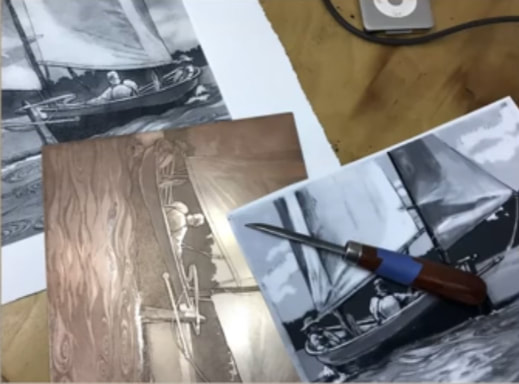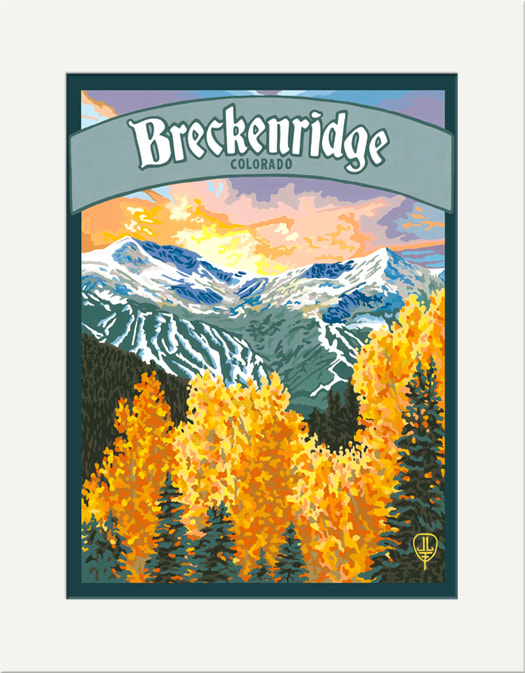| Julie Leidel creates open edition, giclee print reproductions (fine art reproductions) of her original hand-painted gouache and acrylic artwork. | "What is a print?"I get this question a lot at my art shows because it IS confusing! There are different answers that fall under the umbrella of the word "print" alone and I'd like to help clarify the term. Merriam-Webster defines print in these three ways that help us in the art world: (a): a copy made by printing (b): a reproduction of an original work of art (such as a painting) made by a photomechanical process (c): an original work of art (such as a woodcut, etching, or lithograph) intended for graphic reproduction and produced by or under the supervision of the artist who designed it So it's clear to me that there are three DIFFERENT meanings of the word "print" when in context to the art world. No wonder you are confused. The term Fine Art Print really needs to stay exclusively within the world of printmaking. An original print is a work of art on paper which has been conceived by the artist. Prints are produced by drawing or carving a composition on a carrier surface (know as the matrix) such as a wood block, metal plate or stone. This surface is then inked and the image is transferred to paper by the application of pressure, thus creating an impression or print. Unlike paintings or drawings, fine art prints usually exist in multiple impressions, each of which is pulled from the inked surface. The total number of impressions made is called an edition.* The matrix itself usually wears down through the printing and rubbing process. It's nearly impossible to make more than 100 prints of a copper plate in most cases. Linoleum blocks will deteriorate after a decade, or sooner if exposed to UV light, so the window to create prints from that block is limited. Depending on the matrix, creating multiple prints can destroy or wear down the original plate or block. The first print is better than the 100th because the matrix is sharp. But, there are well-cared for wood blocks that can last centuries, and a steel faced copper plate can run near-infinite amount of prints. So, as you can see, the world of printmaking is vast and there's not really a one-size-fits-all approach when describing the work. Here's a list of terms that help define Fine Art Print. Relief Techniques: woodcut, linocut Intaglio Techniques: engraving, dry point, mezzotint, etching, aquatint, photogravure Stencil Techniques: screen print, pochoir Other Techniques: monoprint, monotype, lithography, collagraph __________________________ The term "Fine Art Print" or it's argued even the term "Art Print" has been adopted by many a photographer, painter, and digital artist, BUT what they are really producing is a Giclée Print Reproduction or a Fine Art Reproduction. The photographers, painters, and digital artists are not trying to trick you with this terminology, far from it. They are trying to illustrate the difference between their print and a cheap reproduction. Giclée (pronounced zhee'clay) is an art print made with an ink jet printer using the highest archival-quality inks and surfaces. The word comes from French, meaning to spray, which is exactly what an ink jet printer does. The quality of a Giclée print is far superior to all other forms of reproduction printing. A reproduction is a commercial copy of an original work of art, digitally stored, so that the 1st and the 500th reproduction print look exactly the same, there is no degradation of the print quality. Giclée Print Reproductions can be printed in limited edition, or what's known as open edition, meaning that the number of prints is not defined. Print reproductions can be printed on paper, canvas, wood, metal, stone, ceramic... almost any surface. Unlike printmaking, the only reason to run a limited edition of a print reproduction would be to try to create more economical supply and demand - a higher price point for sale and resale of a print through the years. The term "reproduction" alone could mean a photocopy, or a digital photo of a Giclée print that's been reproduced on a laser printer. Basically any old copy. The word "reproduction" alone can have a negative connotation and photographers, painters and digital artists steer clear of this word on it's own because it doesn't speak to the high quality of their print. So yes, the word "print" or event "art print" isn't really enough to fully describe to the public what it is they are buying. Ask more questions if you can of the artist selling their work. They will be happy to go into detail about their process and what it is that you are buying from them. If they use Fine Art Print incorrectly, mention the world of printmaking, and reputable artists will quickly differentiate themselves from that art form. *content sourced from paceprints.com |
|
Comments are closed.
|
AuthorJulie Leidel shares news and musings on inspiration for her artwork. Archives
May 2024
Categories
All
|



 RSS Feed
RSS Feed